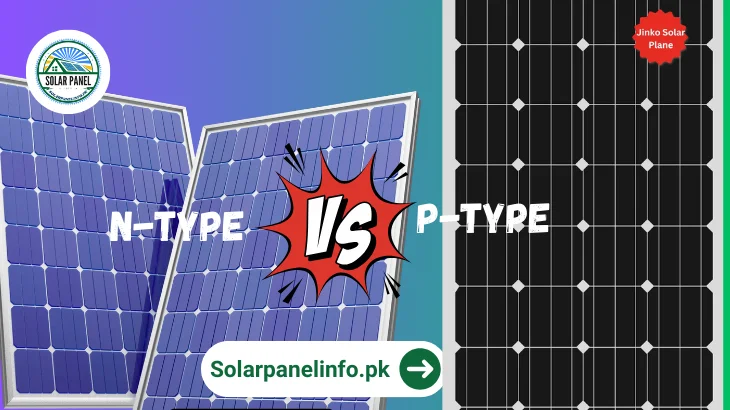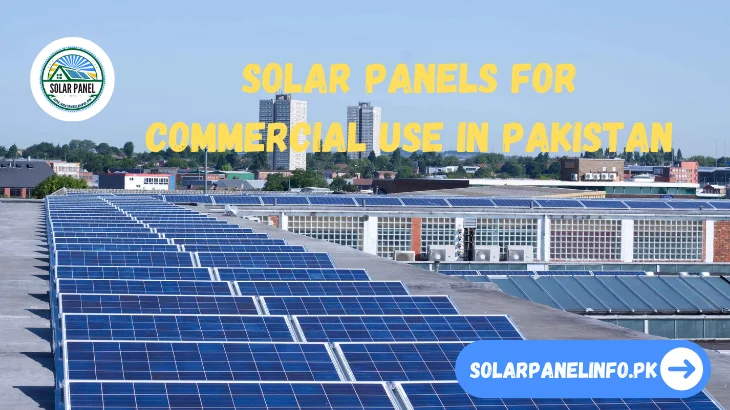N-type and P-type Solar Cells
Solar energy technology has come a long way, especially in the area of photovoltaic (PV) cells, which include N-type and P-type solar cells. To choose the best solar panels, it is essential to comprehend the differences between these types in terms of material composition, performance, and applications. N-type and P-type silicon cells are the most widely used solar cells, which convert sunlight into electricity. Solar energy has become essential for sustainable energy solutions. To understand solar panel efficiencies, it is essential to comprehend these distinctions.
Read more: 3D Solar Panel Prices in Pakistan.

شمسی توانائی کی ٹیکنالوجی نے ایک طویل راستہ طے کیا ہے، خاص طور پر فوٹو وولٹک (PV) خلیوں کے علاقے میں، جس میں N-type اور P-type سولر سیل شامل ہیں۔ بہترین سولر پینلز کا انتخاب کرنے کے لیے، مواد کی ساخت، کارکردگی اور ایپلی کیشنز کے لحاظ سے ان اقسام کے درمیان فرق کو سمجھنا ضروری ہے۔ N-type اور P-type سلکان سیلز سب سے زیادہ استعمال ہونے والے سولر سیل ہیں، جو سورج کی روشنی کو بجلی میں تبدیل کرتے ہیں۔ پائیدار توانائی کے حل کے لیے شمسی توانائی ضروری ہو گئی ہے۔ سولر پینل کی افادیت کو سمجھنے کے لیے، ان امتیازات کو سمجھنا ضروری ہے۔
What Are N-Type and P-Type Solar Cells?
Solar cells are composed of semiconductor materials, primarily silicon, which is doped to create an imbalance of charge carriers. This doping process introduces specific impurities that modify the electrical properties of the silicon.
P-Type Solar Cells:
These cells are infused with elements like boron, which create an excess of positive charge carriers known as holes. They are the most commonly used type in the solar industry.
N-Type Solar Cells:
These cells are doped with elements such as phosphorus, which add extra electrons, resulting in a negative charge.
Key Differences Between N-Type and P-Type Solar Cells
N-type solar panels |
P-type solar panels |
| Installation Cost:
Due to the uncommon technology of these panels, their installation cost is higher compared to P-type solar panels. As a result, these solar panels can be slightly more expensive for homeowners. |
Installation Cost:
The installation expenses for these panels are significantly reduced compared to N-type panels. These panels are more economical due to the advanced construction technology present in the market when compared to N type panels. Consequently, they are more budget-friendly. |
| Life span:
Considering their construction method, they tend to have a greater lifespan compared to P-type solar panels. |
Life span:
They may not last as long as N-type solar panels, but they still bring great value! |
| Availability:
The construction technology implemented in these systems is more recent than that used in P-type panels; consequently, these solar panel systems are not commonly found in the market. |
Availability:
The technology used for building these solar systems has been on the market for a considerable duration. These solar panel systems can be found readily at a significantly lower price compared to N type solar systems. |
| Performance and efficiency:
Their performance level is slightly better than P-type solar panels. These panels have an efficiency level of 25.7 %. These systems can fulfill more energy requirements. |
Performance and efficiency:
They generate a slightly lower amount of energy than N-type solar panels, with an efficiency level of 23.6%. |
| Light-induced degradation:
Due to their construction material, they are not highly affected by light-induced degradation. |
Light-induced degradation:
These systems might be more susceptible to defects caused by light-induced degradation. |
| Space requirement:
If energy consumption is high and the demand exceeds the space, then N-type solar panels are a better choice. |
Space requirement:
If you have a large space for the installation of a comparatively larger solar panel system, then a P-type system will be a better choice. |
| Temperature resistance:
They have greater resistance to high temperatures compared to P-type solar systems. |
Temperature resistance:
When compared to N-type panels, they have a bit lower resistance to high temperatures. |
Advantages of P-Type Solar Cells
Lower Cost:(کم لاگت)
P-type solar cells are not only budget-friendly but also a favorite for both residential and commercial installations. Their affordability makes it easier for homeowners and businesses alike to harness the power of the sun and embrace sustainable energy solutions!
Proven Technology:(ثابت شدہ ٹیکنالوجی)
For decades, these systems have stood the test of time, delivering reliable and stable energy production that we can count on.
Good Performance in Low Light:(کم روشنی میں اچھی کارکردگی)
P-type cells shine even when the sky is cloudy or the surroundings are dim! Their impressive performance in overcast or shaded conditions makes them a reliable choice for harnessing energy, no matter the weather.
Advantages of N-Type Solar Cells
Higher Efficiency:(اعلی کارکردگی)
Get ready for some thrilling advancements in solar technology! N-type cells are taking the spotlight with their lower impurity levels and significantly reduced recombination losses. This incredible combination means they’re driving efficiency like never before!
Lower Degradation:(کم انحطاط)
These cells offer enhanced resilience against light-induced degradation (LID), guaranteeing a reliable and long-lasting energy yield that you can count on for the future!
Better Performance in Harsh Conditions:(سخت حالات میں بہتر کارکردگی)
They truly shine when faced with scorching temperatures and steamy humidity, delivering outstanding performance even in the toughest conditions.
Which Type Should You Choose?
The decision between N-type and P-type solar cells is influenced by considerations such as budget, performance needs, and environmental factors. When cost is a key factor, P-type solar panels offer a dependable and cost-effective choice. On the other hand, if long-term performance, efficiency, and longevity are of greater importance, N-type solar panels represent a superior investment even with their higher initial cost.
Conclusion
Both N-type and P-type solar cells are essential components in the renewable energy sector. P-type solar cells are a viable choice for many consumers due to their cost-effectiveness and established technology. In contrast, N-type solar cells provide higher efficiency, reduced degradation, and enhanced performance in adverse conditions, positioning them as an excellent option for those aiming for long-term energy solutions. As advancements in solar technology continue, both types will play a significant role in creating a more sustainable and energy-efficient future.
N-type اور P-type شمسی خلیے دونوں قابل تجدید توانائی کے شعبے میں ضروری اجزاء ہیں۔ P-type سولر سیل ان کی لاگت کی تاثیر اور قائم شدہ ٹیکنالوجی کی وجہ سے بہت سے صارفین کے لیے قابل عمل انتخاب ہیں۔ اس کے برعکس، این قسم کے سولر سیلز اعلی کارکردگی، کم انحطاط، اور منفی حالات میں بہتر کارکردگی فراہم کرتے ہیں، جو انہیں طویل مدتی توانائی کے حل کے لیے ایک بہترین آپشن کے طور پر پوزیشن میں رکھتے ہیں۔ جیسے جیسے شمسی ٹیکنالوجی میں ترقی جاری ہے، دونوں قسمیں زیادہ پائیدار اور توانائی کے قابل مستقبل بنانے میں اہم کردار ادا کریں گی۔
FAQ’s
Which is better: N-type or P-type solar panels? The better choice depends on your needs. N-type panels offer higher efficiency, longer lifespan, and better performance in harsh conditions but are more expensive. P-type panels are more affordable and widely available, making them a cost-effective choice for general use.
Why do N-type solar cells have a longer lifespan? N-type solar cells are less affected by light-induced degradation (LID) and have lower impurity levels, which reduces wear and tear over time and ensures more consistent energy output.
Are N-type solar panels worth the extra cost? Yes, if you prioritize long-term performance and durability. Although they have a higher upfront cost, N-type solar panels deliver better efficiency and lower degradation, making them a smart investment for the future.


